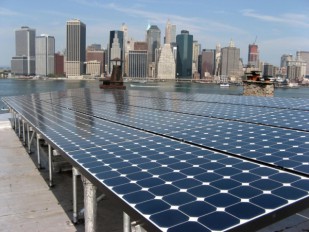Tiny flying robot that can perch to save energy

Harvard University’s microdrone can stick to objects to conserve energy during long flights
Harvard University’s microdrone can stick to objects to conserve energy during long flights
It is called Robobee and was inspired by the biology of a fly, with submillimeter-scale anatomy and two wafer-thin wings that flap at 120 times per second. It weighs 84 milligrams -less than the average bee- and can achieve vertical takeoff, hovering and steering. Most microdrones on the market can only fly 5 to 10 minutes per charge, but Robobee is capable of longer flights. An electro-adhesive patch and a shock-absorbing foam mount allow it to temporarily stick to surfaces during flight. This way, it can save energy as it requires 1000 times less power to perch than it does to hover.
This technology could expand the utility and capability of microdrones, as they could be used for distributed environmental monitoring, search-and-rescue operations, and assistance with crop pollination.
Media
Want to read more like this story?

Energy Upgrading In Buildings Saves Billion Euros From Energy Production
Oct, 16, 2015 | NewsThe energy upgrade of EU buildings could save 80-153 billion Euros until 2050 in investment funds th...

By 2050, half of the EU citizens could be generating their own renewable energy
Oct, 10, 2016 | NewsA people-powered energy revolution is possible and may be close at hand A people-powered energy r...

World Sustainable Energy Days 2018 in Wels, Austria
Feb, 01, 2018 | NewsOne of the largest conferences on sustainable energy One of the largest conferences on sustainable...

UK’s first energy-positive office opens in Swansea
Jul, 16, 2018 | NewsThe UK's first energy-positive classroom generates more than one and a half times the solar energy i...

Neighbors exchange energy among themselves as part of an experimental energy network
Mar, 28, 2017 | NewsBuildings in Brooklyn are connected to a microgrid, allowing participants to buy and sell renewable...

A Chinese tidal energy project qualifies as ‘world record’
Jun, 29, 2018 | NewsThe country’s first tidal energy demo project completed one year of operation The country&r...

EU Parliament is updating the EU's rules to further improve the energy efficiency of buildings
Apr, 12, 2018 | NewsFrom January 1st, 2021, all new buildings in the EU should use little or no energy for heating, cool...

Data-Driven Siting: Revolutionizing Renewable Energy Efficiency
Dec, 20, 2024 | NewsBuilding efficient solar and wind farms requires more than just identifying areas with the most sun...

Best ways to reduce energy consumption in buildings
Apr, 14, 2016 | NewsPractices with greatest impact on energy conservation are under study Practices with greatest imp...
Trending

Vertical gardens in Mexico City to combat pollution

Characteristics of Load Bearing Masonry Construction

Taipei 101’s impressive tuned mass damper

Saudi Park Closed After 360 Big Pendulum Ride Crashes to Ground, 23 injured

Dutch greenhouses have revolutionized modern farming

Federal court rules Biden’s offshore drilling ban unlawful


